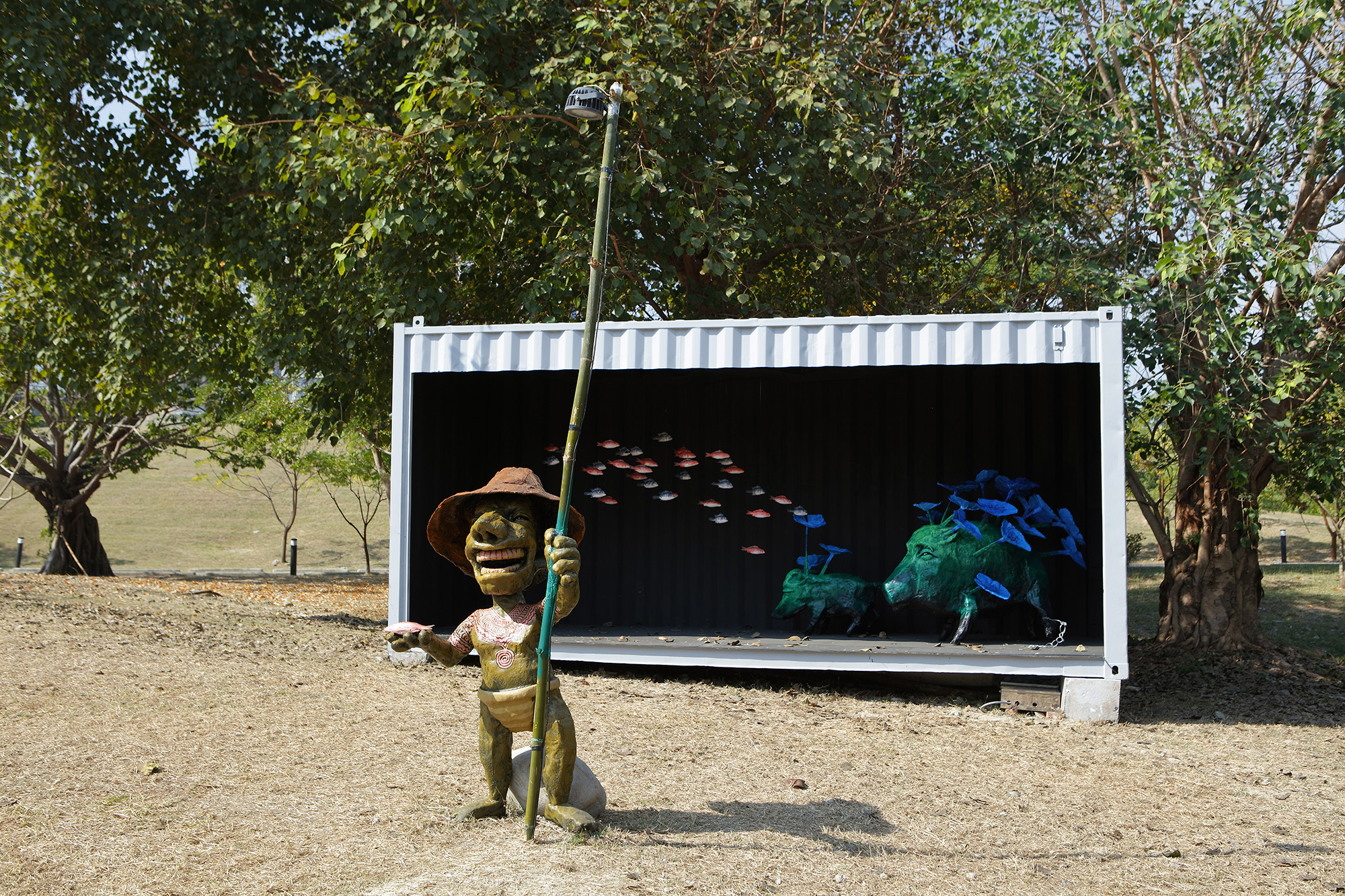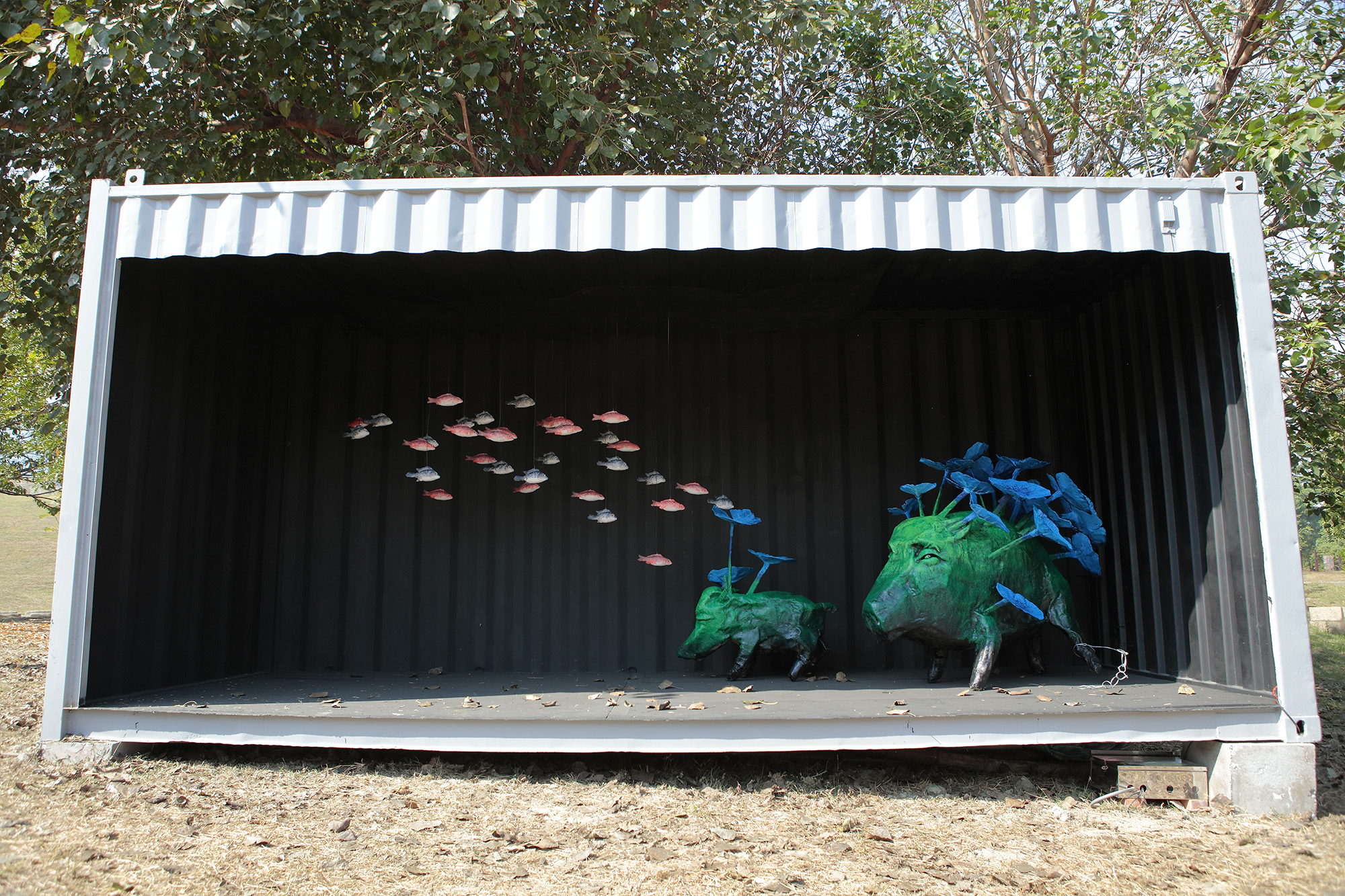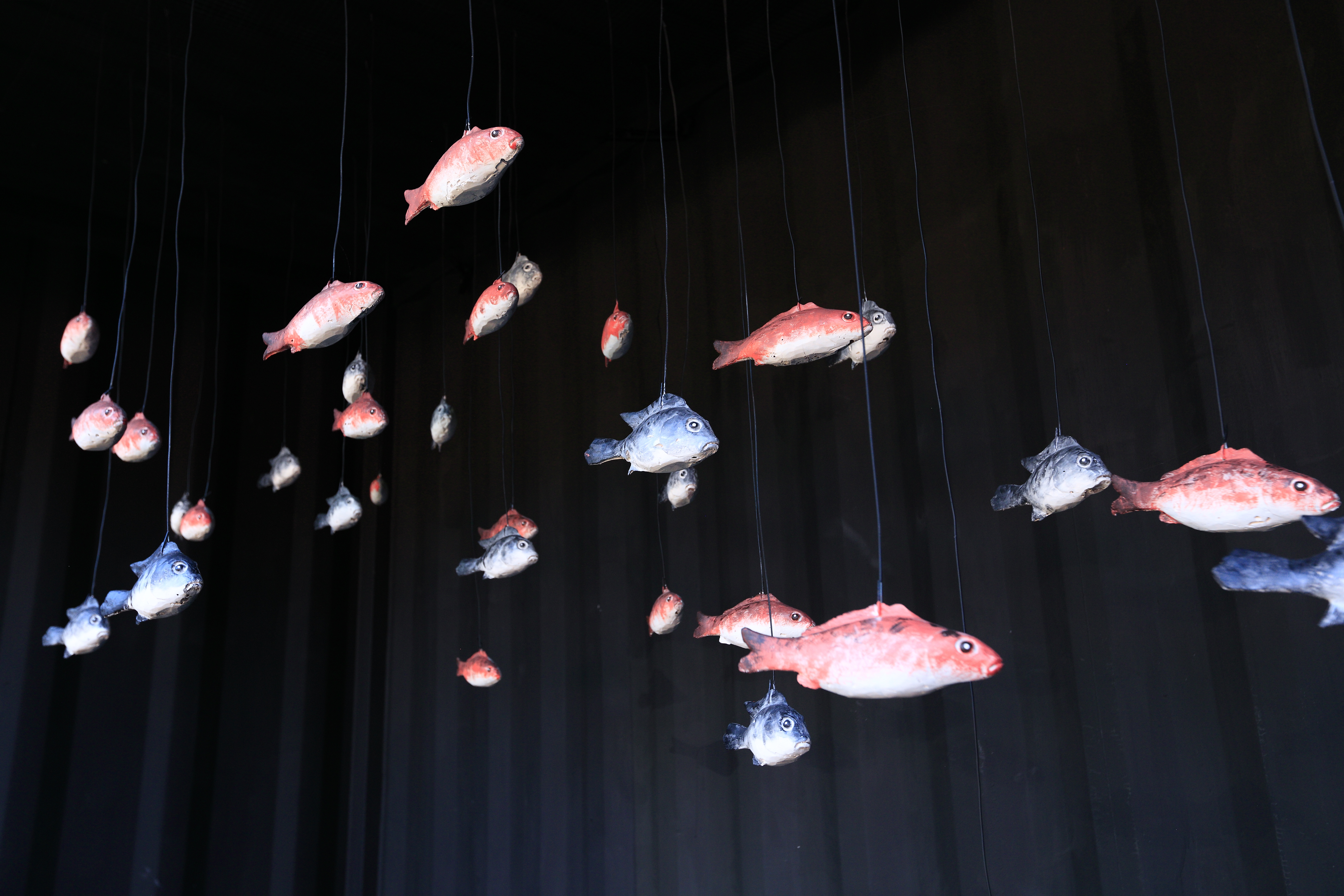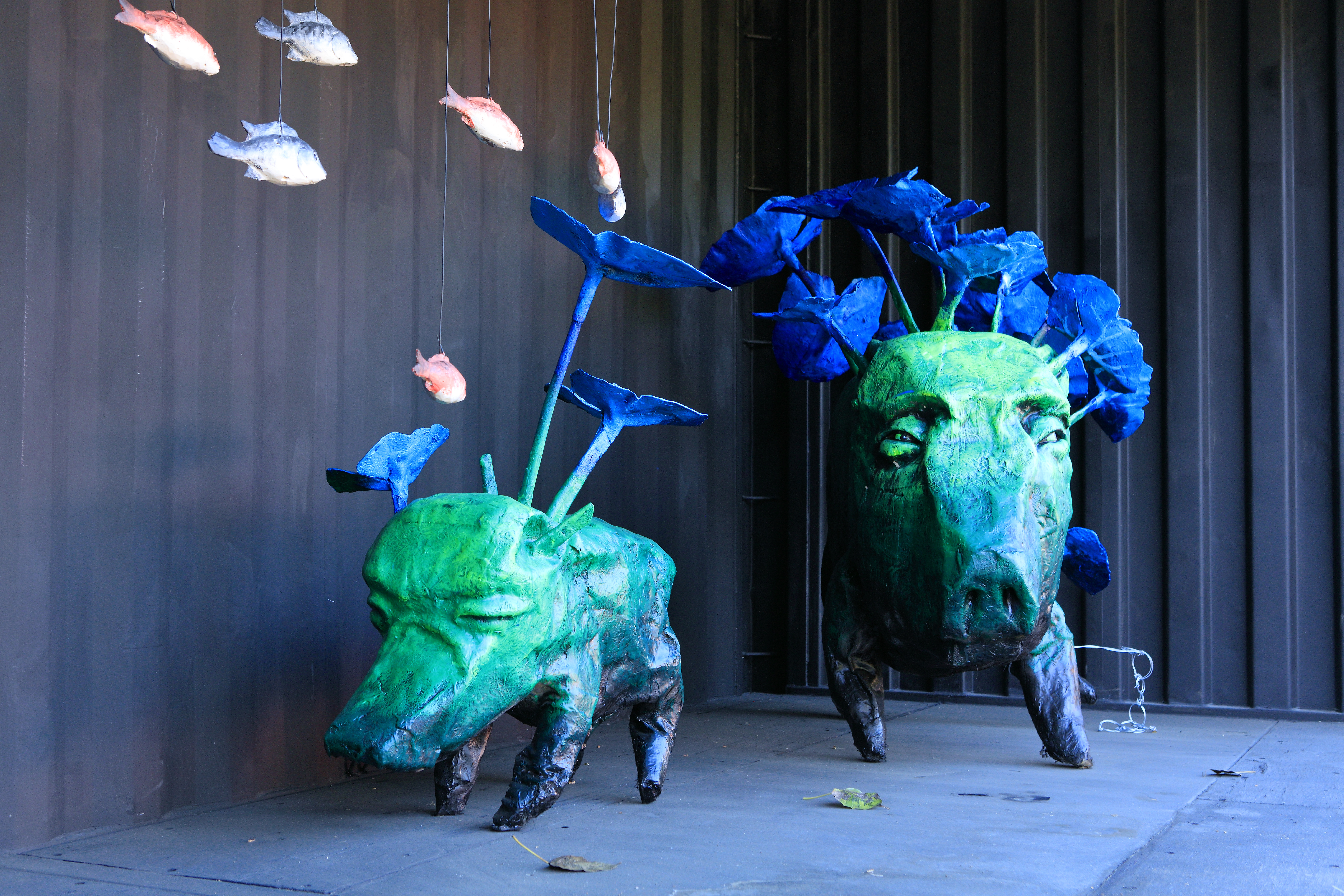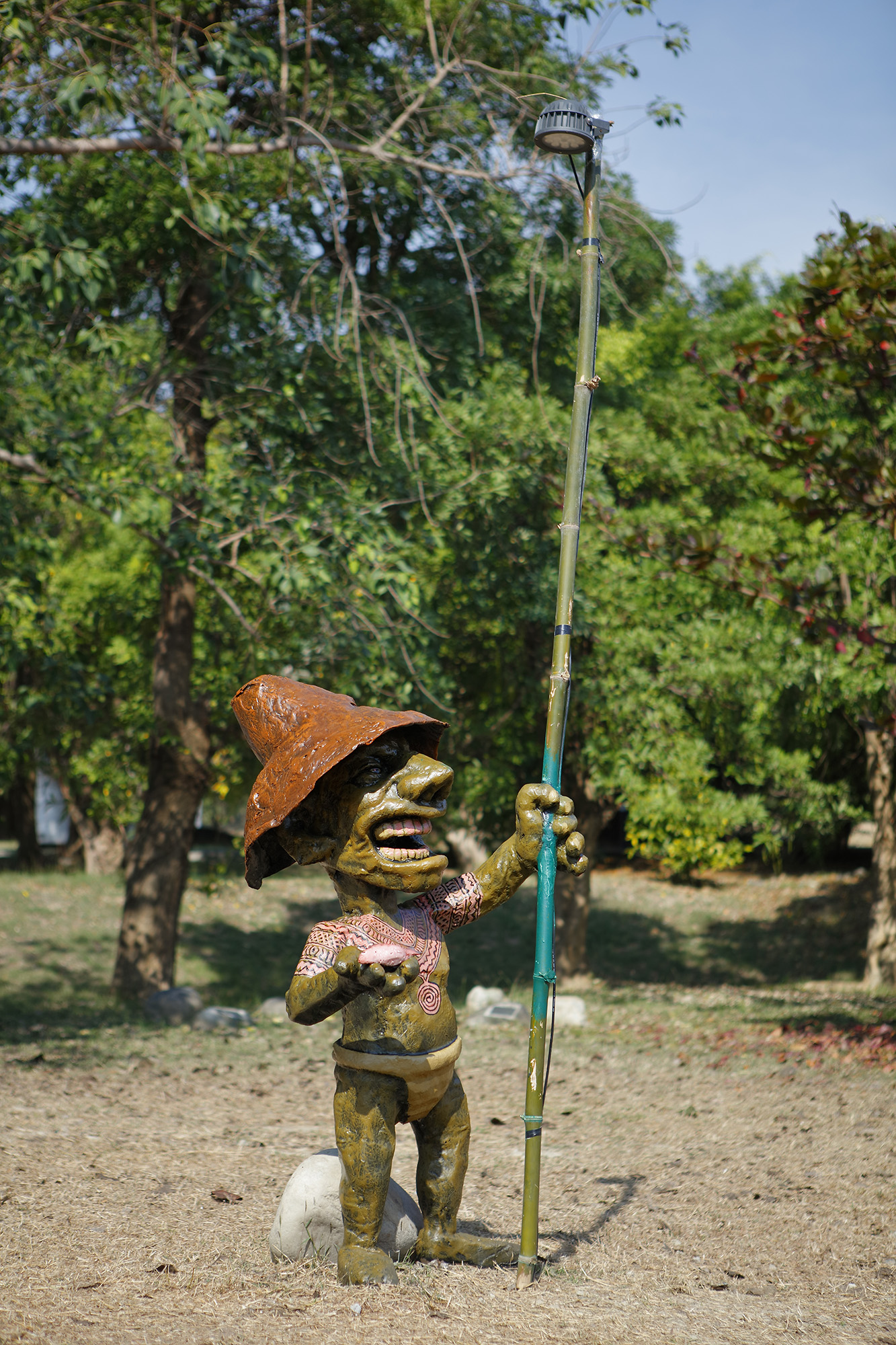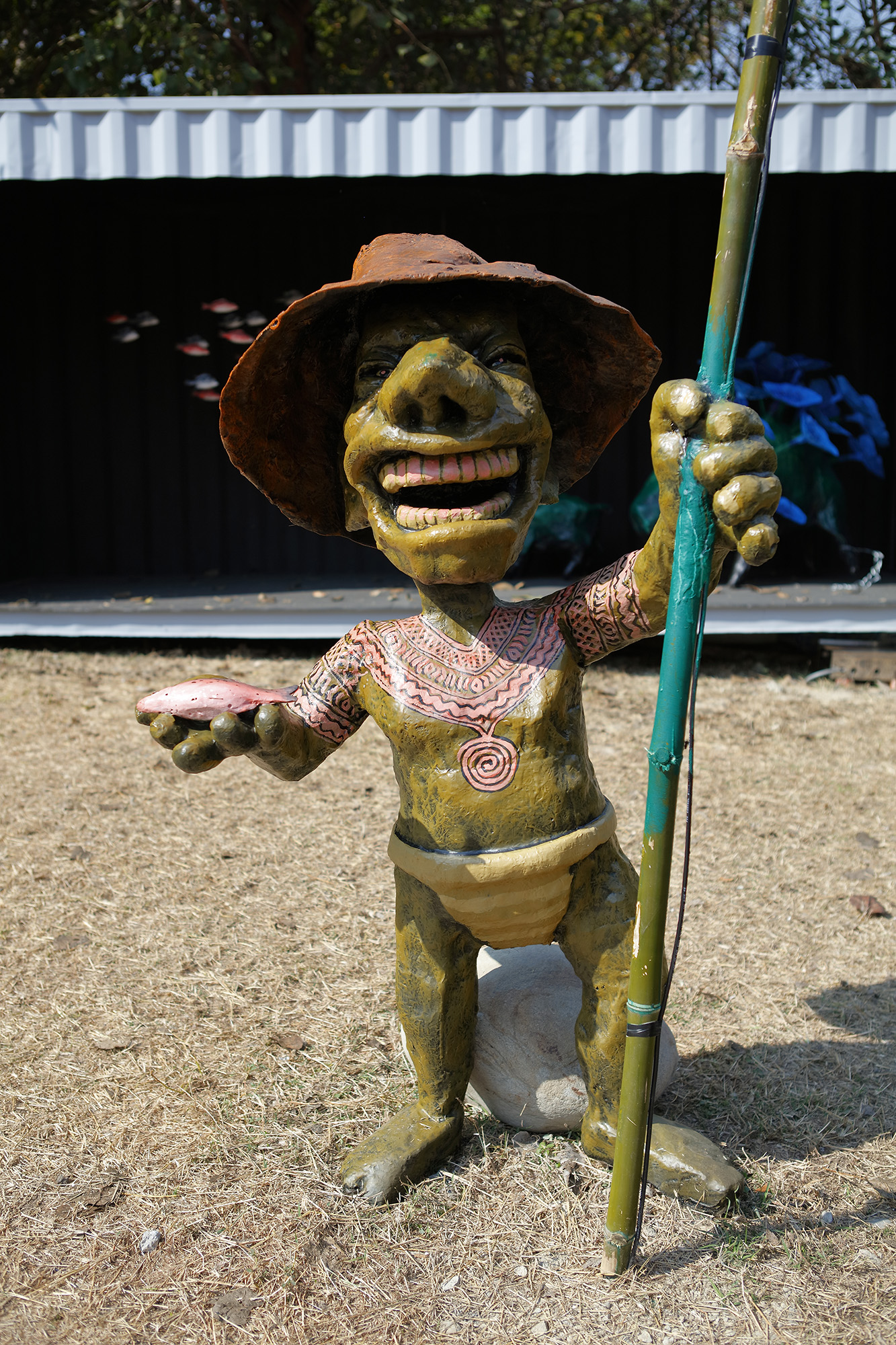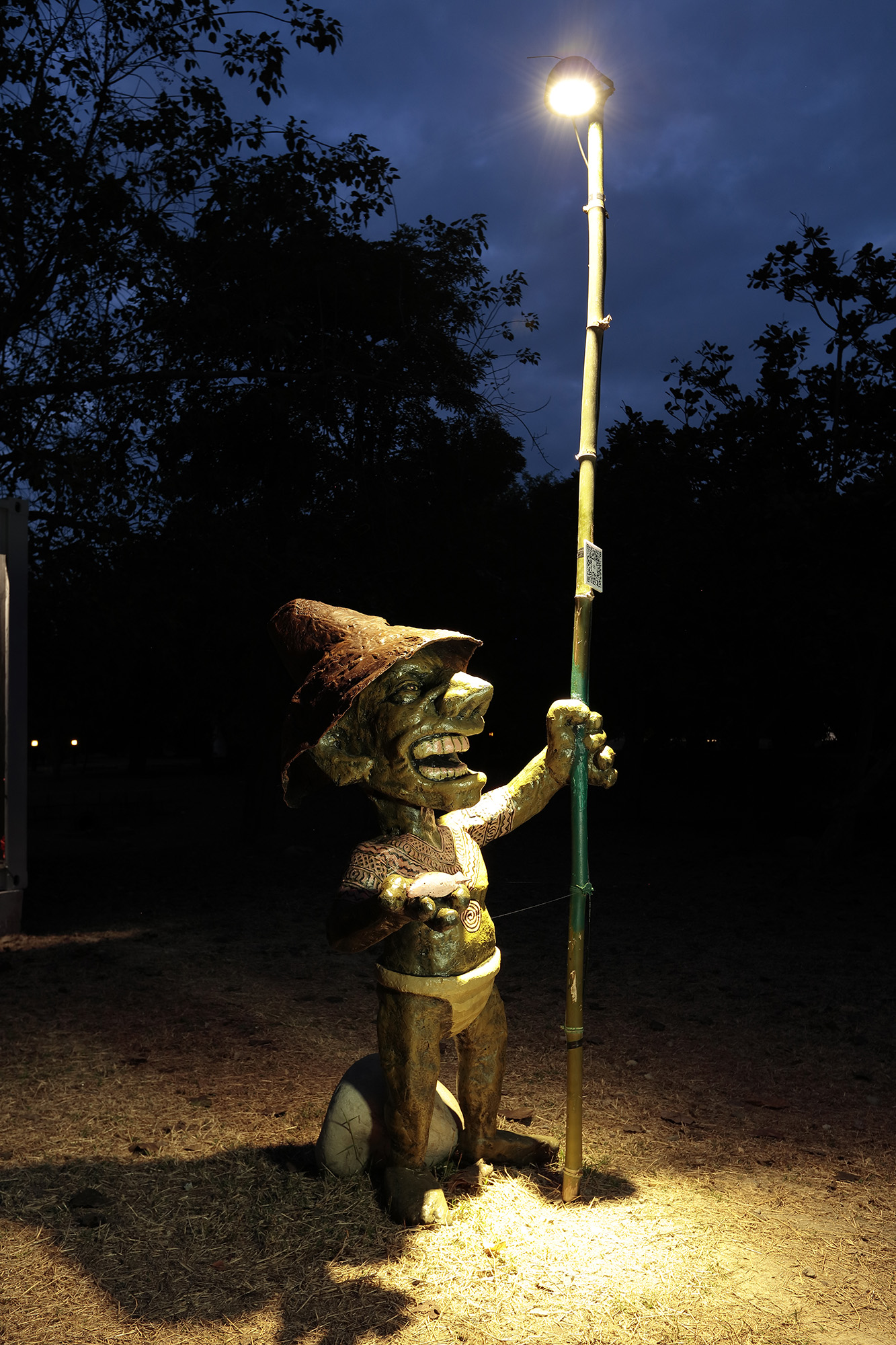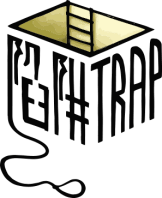
巴豪嵐 ‧ 吉嵐
巴豪嵐・吉嵐,擁有排灣族血統,成年後回歸原生文化,使用母親的姓氏與外公的名字改回原名。吉嵐的創作題材源自於部落祭儀、神話、傳說,透過繪畫、雕塑、陶藝等形式,結合多元媒材,詮釋神靈世界。他的畫作富有戲劇性,光影對比強烈,營造出有濃厚渲染力的場景,呈現豐富的想像力與生命力,也提出人類為了自身利益而破壞環境的再反思。
曾創作繪本插圖,參與多項個展、聯展與駐村創作,獲得第一屆和第二屆Pulima藝術獎入選。近年參與「原動力革命」、「手出原邑巧者如思」等特展。
作品名稱
陷阱之前的那一吋
(An Inch before the Trap)
Chi-Lan Pa Hao Lan
Chi-Lan Pa Hao Lan is an artist of Paiwan ethnicity. He returned to his cultural roots after he came of age. His indigenous name is a combination of his mother’s family name and his maternal grandfather’s first name. Based on themes originating from the tribal ceremonies, myths, and legends, he uses diverse media to create paintings, sculptures, and ceramic works that convey his representation of the world of indigenous deities and ancestral spirits. His paintings are dramatic with a strong contrast between light and shadow in his depiction of scenarios that can intensively strike a chord of viewers’ hearts. His works not only demonstrate rich imagination and energy of life but also demonstrate deep reflection upon our damage to the environment in our own interests.
He used to work as an illustration artist and participated in several solo exhibitions, joint exhibitions, and artist-in-residence programs. He was once nominated for the 1st and 2nd Pulima Art Awards. In recent years, he participated in special exhibitions such as Inner Revolution and Deft Hands, Indigenous Insights.
